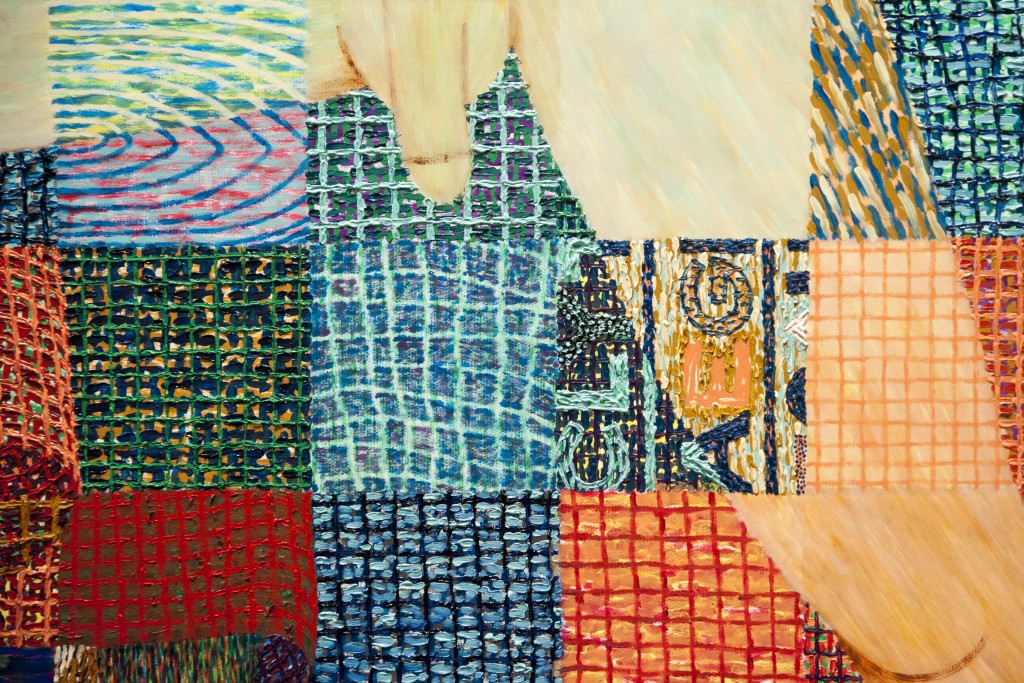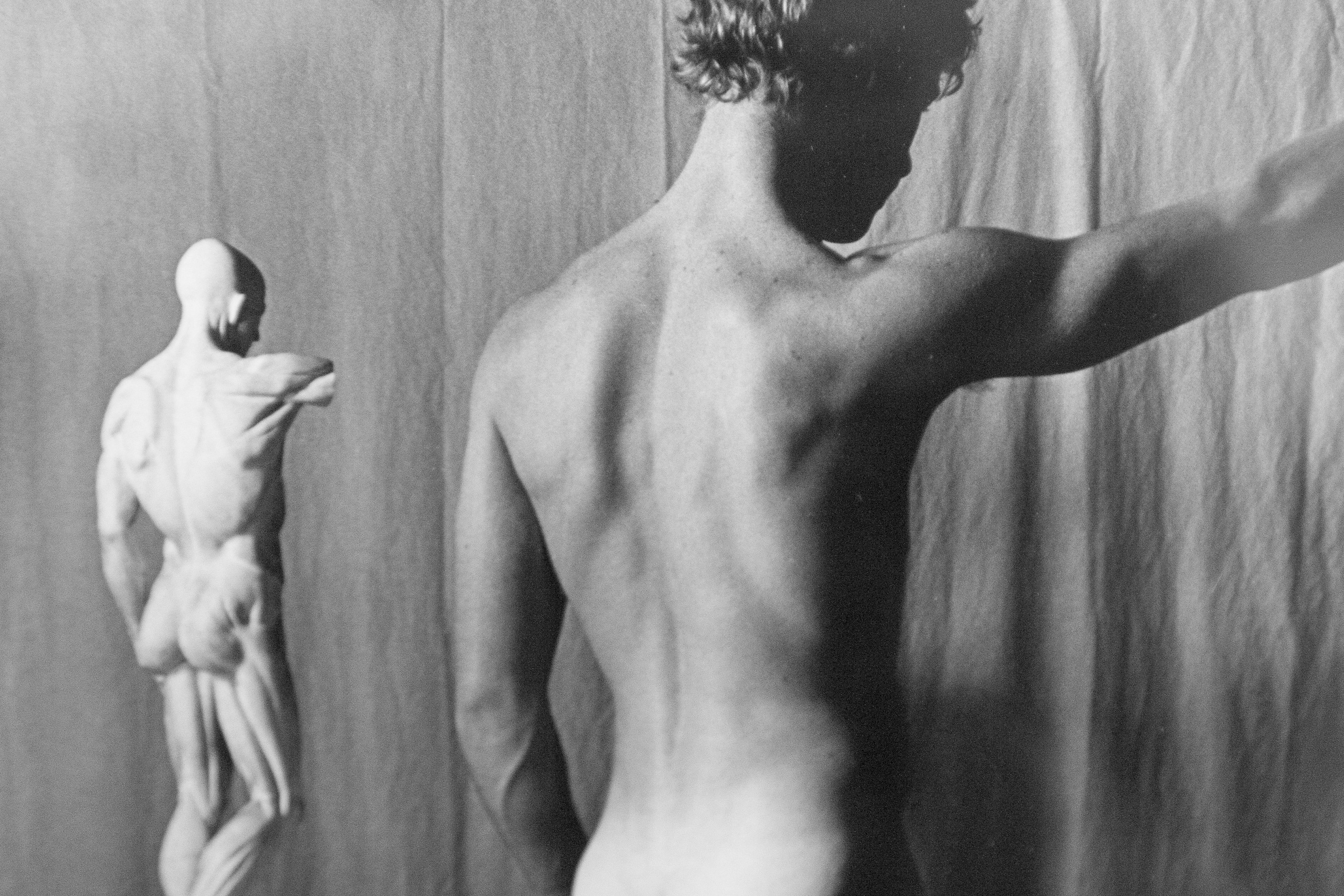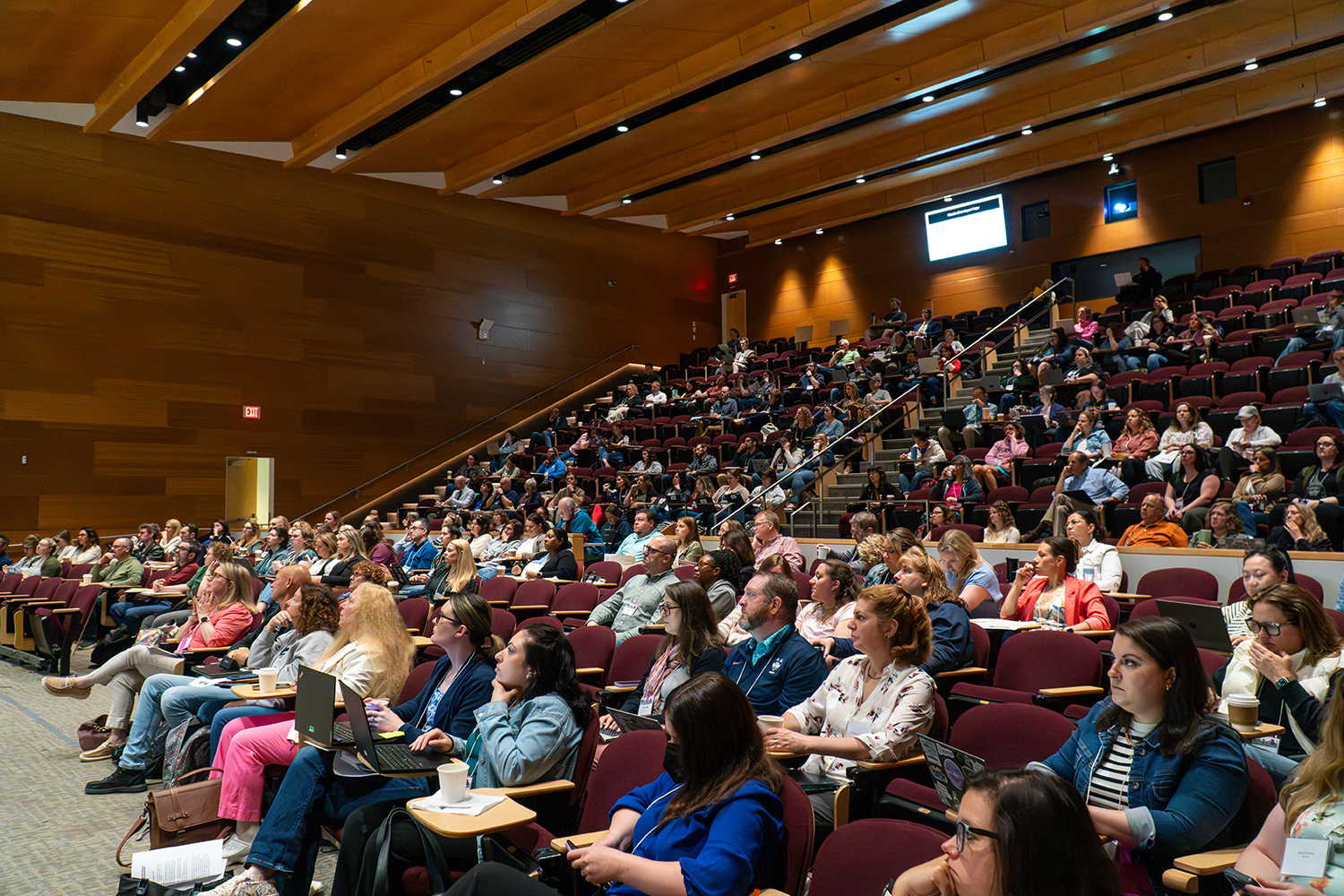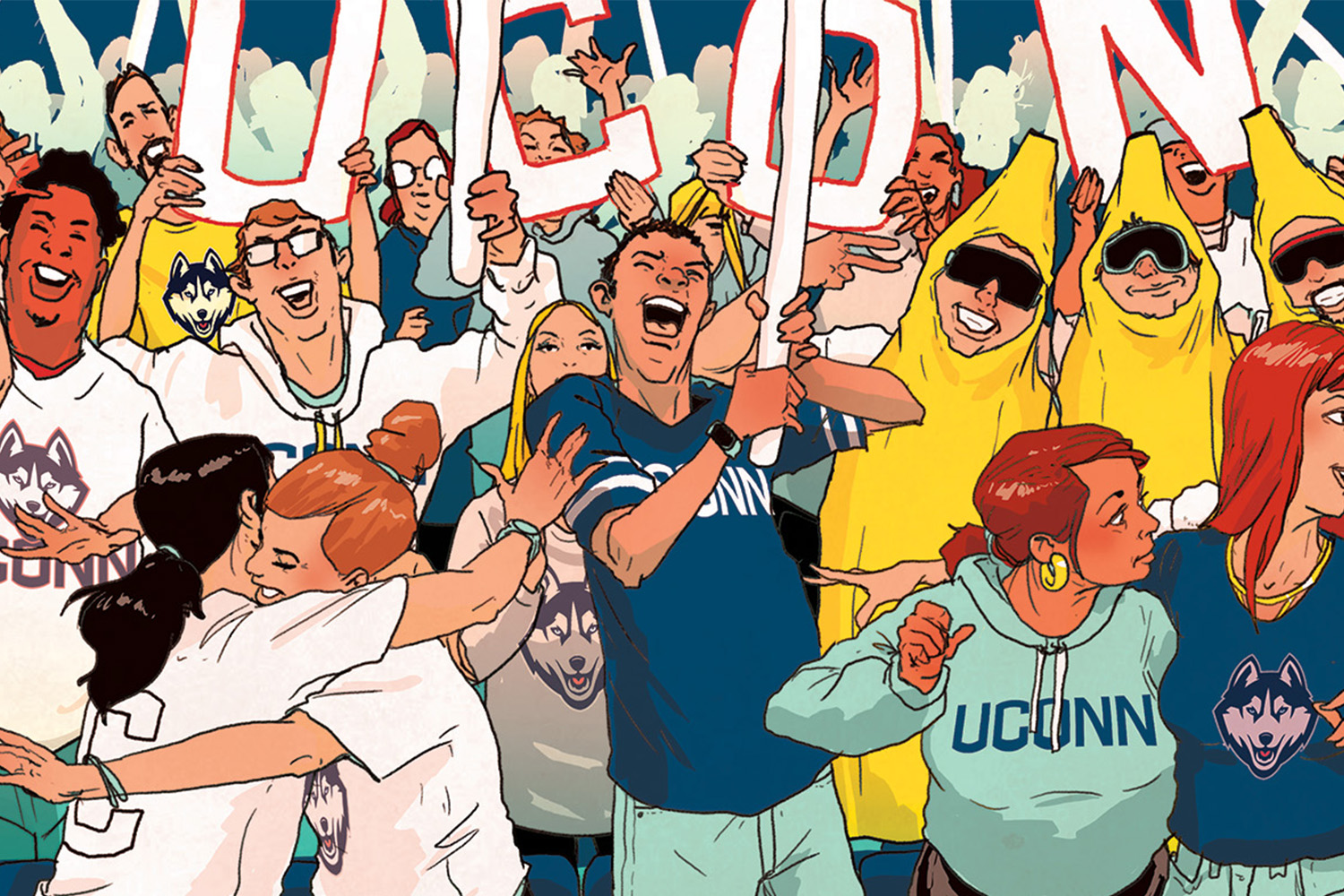From the first Olympic Games in ancient Greece, when images of muscular male athletes were painted on urns, to the images of gods and heroes created in Western art in succeeding centuries, the ideal of masculinity was characterized by the muscular male nude figure. In fact, the male nude was a more frequent figure in art than the female nude for hundreds of years, until the early 19th century, when Victorian morality influenced art and culture.
Toward the end of the 1800s, the advent of “physical culture” (the Victorian version of physical fitness) and the intense realism of the new medium of photography revived interest in the male nude in art that later moved to abstract representations of the male body in painting and sculpture.

“Stark Imagery: The Male Nude in Art,” on display at the William Benton Museum of Art through March 13, traces the history of the male body as depicted in drawings, paintings, sculpture, and photography from the 16th century black-and-white chalk drawings of Alessandro Allori, to the late 20th-century photography of Roger L. Crossgrove, emeritus professor of art in the School of Fine Arts, and the early 21st-century paintings of Benjamin Degen.
Sherry Buckberrough, chair of the Department of Art History at the University of Hartford, who wrote much of the exhibition text, says the early 20th-century interest in body-building and sports helped to revive art focused on the nude male body.
“This development had several sources. One was a desire for outdoor activity and healthy bodies after the long Victorian practice of spending most of the time in heavily layered interiors,” she says. “Another was what seems to have been a need to redirect the image of bourgeois masculinity from the properly dressed man sitting in an office to the physically active, strong man. The move from soft to hard revived confidence in masculinity. Interest in healthy, athletic bodies continues to this day.”
The male nude was a more frequent figure in art than the female nude for hundreds of years, until the early 19th century.
The works in the exhibition include a series of 1977 Polaroid images by Andy Warhol; a 1999 portrait of Tour de France winner Lance Armstrong by photographer Annie Leibovitz; and pencil studies by May Stevens for her 1969 “Big Daddy” series of the aging male figure, based on her father.
Thomas Lawrence Long, associate professor-in-residence in the School of Nursing who has a joint appointment in Women’s, Gender, and Sexuality Studies, collaborated in preparing the exhibition and, along with Buckberrough, recorded comments about the works on view.
Long says the late 1970s and early 1980s marked a shift in the view of the idealized male body. In the 1970s, Playgirl magazine featured male celebrities and athletes posing as a counterpoint to the “Bunnies” in Hugh Hefner’s Playboy magazine. Popular culture was influenced by the form-fitting fashion of the disco dance era, followed by the introduction of music videos on MTV and the rise of heavy metal music. By the 1990s, fashion designer Calvin Klein’s advertisements featured underwear modeled by musician and actor Mark Wahlberg on giant billboards in New York City.

“The age of disco was a hypersexualized world. The dances were very choreographed and had to be skillful,” says Long, who teaches the “Masculinities” core course in Women’s Gender and Sexuality Studies. “Heavy metal rock signals a shift from hypersexual to hyper-masculine representations. These sort of exaggerated forms of masculinity began to appear. Then with music videos in the ’80s, there begins this hyper-sexualizing, pornographically inspired video. When I look at music videos of the last 15 to 20 years, they are appropriating tropes from pornography with the exception of full nudity.”
Most of the works in “Stark Imagery” are isolated representations of men, but there are some photos of men with men in affectionate postures, which Long says is a reflection of changing attitudes and acceptance of same-sex marriage in the 21st century.
“My hope is that the exhibit will give people an opportunity to think in new ways about the relationship between men’s bodies and this fluid thing we call ‘masculinity,’ and think about the ways in which they are related to each other and the ways in which they may conflict with each other,” Long says. “My bet is that [most men] – I know I did – when we were adolescents looked at themselves in the mirror, we studied our bodies. We were looking for signs of something. Do I look at all like the other guys I see in the locker room in phys ed class? My body is changing, do I like those changes or not? I think we don’t take into account sufficiently the way males can be as conscious of their bodies [as females], and often conflicted about those changes.”
A conversation on the exhibit, “Exploring Masculinity in Modern Culture,” will take place on Friday, Feb. 12 from 5:30 to 7 p.m. at the Benton. Discussants will include Buckberrough, Long, and Daniel Silvermint, associate professor of philosophy with a joint appointment in Women’s, Gender, and Sexuality Studies.
“Stark Imagery: The Male Nude in Art” continues, along with “In-Difference: Reflections on Race,” through March 13 at the Benton Museum of Art, 245 Glenbrook Road, Storrs. For more information go to the Benton website.



